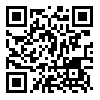
Journal of Emergency Health Care
Formerly known as: International Journal of Medical Investigation

Volume 4, Issue 3 (September 2015)
J Emerg Health Care 2015, 4(3): 306-312 |
Back to browse issues page
Download citation:
BibTeX | RIS | EndNote | Medlars | ProCite | Reference Manager | RefWorks
Send citation to:



BibTeX | RIS | EndNote | Medlars | ProCite | Reference Manager | RefWorks
Send citation to:
Perveen F, Ahmad E. Frequency of diabetes mellitus in the population of Usheri Dara, Khyber Pakhtunkhwa, Pakistan. J Emerg Health Care 2015; 4 (3) :306-312
URL: http://intjmi.com/article-1-175-en.html
URL: http://intjmi.com/article-1-175-en.html
Department of Zoology, Shaheed Benazir Bhutto University (SBBU), Main Campus, Sheringal, Khyber Pakhtunkhwa (KP), Pakistan
Abstract: (12158 Views)
Abstract Background: Diabetes mellitus (DM) is a metabolic disorder characterized by high blood glucose (HBG) either because of low production of insulin by the pancreas or receptors do not respond to insulin secreted. Methods: The present study is a part of survey regarding the frequency of DM in Usheri Dara (UD), Dir Upper (DU), Khyber Pakhtunkhwa (KP), Pakistan during June 2013-August 2014. A questionnaire was designed having information about the most of aspects of DM. They were distributed randomly among the people (n=500) of the community of UD, which was divided in 7 quadrates, viz., Katten, Jabbar, Almas, Tarpatar, Usheri Khas, Batal and Garkohi. Results: Out of 500 respondents, 66 were found to have DM, thus making a frequency rate of 13.2%. However, maximum (8.6%) of the DM patients feel increased thirst and frequent urination at night, moreover, minimum (1.8%) of them feel decreased appetite. Further, in maximum number (6%) of the patient, DM occurred at the age of 31-45 years, furthermore, in minimum (0.6%) of them at the age of 2-15 years. However, maximum number (6%) of family members of patients suffered from DM was 4-7, moreover, minimum (0.6%) were 1-3. Further, insulin used by maximum numbers (5%) of DM patients was humulin70/30. Furthermore, minimum (0.4%) of them use lispro. However, medicines used by maximum numbers (3.4%) of DM patients were orinase tablets, moreover, minimum (1%) of them use glucophage Conclusion: It was concluded that the most common occurring age of DM at diagnosis was 31-45 years. Consequently, adopting healthy life style and use of proper treatment is recommended.
Keywords: Diabetes mellitus (DM), high blood glucose (HBG), hypertension, insulin, morbidity, mortality, pancreas
References
1. 1. Alberti KGMM, Zimmet PZ. Definition, diagnosis and classification of diabetes mellitus. J Diab, Canada, 1998; 15(7): 1-15.
2. Turner AP, Chen B, Piletsky SA. Vitro diagnosis in diabetes. British J Diab, 1999; 45(4): 1596-1601.
3. Zimmet P, McCarty D. The epidemic global estimates and projection of diabetes. International J Diab, 1995; 40(3): 08-16.
4. Guk CC, Harris M I. Mortality in adults with and without diabetes. Diab Care, USA, 1998; 21(2): 1138-1145.
5. David JS, Eram R, Hassan S. High prevalence and metabolic syndrome in a South Africa population. S A Med J, 1999; 102(11): 841-844.
6. Danish AF, Khan A, Muzaffar AK. Prevalence of diabetes mellitus and its relation to diet and physical work in Azad Jammu and Kashmir. Pakistan Journal of Nutrition, 2002; 1(5): 217-222.
7. Raskin P, Rosenstock J. Diabetes and its complication. World J Diab, Birmingham, 1988; 4(5): 417-435.
8. Khan A J. Prevalence of diabetic retinopathy in Pakistani subjects. J Pak Med Association, 1991; 41(1): 49-50.
9. Online, (2013) Districts census report; www.google.com; (Accessed: 23/11/2013).
10. Online maps, (2013) www.google.com; (Accessed: 07/12/2013).
11. Hydrie MZI, Basit A, Ahmad A. Prevalence of diabetes mellitus and impair fasting glucose and associated risk factors in rural area of Baluchistan province according to new American Diabetes Association criteria. J Pak Med Association, 2002; 52(357): 112-118.
12. Khan S, Abbas M, Habib F, Iqbal N. Prevalence of diabetes mellitus in Kotli district of Azad Jammu Kashmir. Sarhad J Agriculture, 2007; 23(4): 1141-1144.
13. Atta, A, Mehwish, R, Sidra, T, Imran, M. Epidemiological study of diabetes mellitus among different ethnic segments in the population of Pakistan. Intl J Res Pharmacology Pharmacotherapeutics, 2014; 3(1): 40-45.
14. Akhter A, Fatema K, Afroz A, Bhowmik B, Ali L, Hussain A. Prevalece of diabetes mellitus in a rural Bangladesh Population. The Open Diab J, 2011; 4(2): 6-13.
15. Nozha M, Mohammad A, Yaqoub Y. Diabetes mellitus in Saudi Arabia. Saudi Med J, 2004; 25(11): 1603-1610.
16. Adil M, Alam A, Jaffery T. Knowledge of type 2 diabetes patients about their illness. Pak J Diab, 2005; 55(5): 221-224.
17. Hameed A, Ahmad S, Rabbi F. Epidemiology of diabetes mellitus in and around Faisal Abad, Pakistan. Pak J Biol Sc, 2002; 5(8): 878-880.
18. Anandakumar, A, Kalpana, T, Mohan, V. child hood and adolescent onset type 1 diabetes mellitus in India. J Med Sc, 2013; 1(1): 46-53.
19. Carolyne, CR, Theobald CE, Cornelio, NM. Prevalence and awareness of type 2 diabetes mellitus among adult population in Mwanza city, Tanzania, Tanzania J Health Res, 2014; 16(2): 01-11.
20. Pinhas, HO, Dolan L, Daniels, SR, Standiford D, Khoury PR, Zeitler P. Increased incidence of non-insulin dependent diabetes mellitus among adolescents. J Pediatr, 1999; 128 (3): 608-615.
21. Alka, DG, Dhumale, GB, Kumbhar, UT, Kadam, YR. Treatment adherence of diabetic patients attending diabetic clinic. Intl J Diab, 2015; 35(1): 19-25.
| Rights and permissions | |
 |
This work is licensed under a Creative Commons Attribution-NonCommercial 4.0 International License. |


